This blog post describes 3GPP (Third Generation Partnership Project), an international standardization body for mobile phone connectivity. 3GPP defines not only the technical specifications for mobile phone connectivity, but also the concept that is the basis of the technical specifications. In this blog post, describes the technical concept behind 5G Network.
How is mobile phone connectivity standardized? What kind of connectivity concepts and functions are planned to be realized in the future? I will summarize when the advanced technical specifications of 5G will be decided and will be realized.
What is 3GPP, Third Generation Partnership Project
3GPP (Third Generation Partnership Project) is a 3rd generation mobile phone (3G) system based on W-CDMA and GSM advanced networks, followed by LTE (4G), and the next generation 5th generation mobile communication system. This is an international standardization project to study and create (5G) specifications.
3GPP is a “project” established in 1998 for the purpose of formulating standard specifications for third-generation mobile communications. It is composed of standardization bodies in each region (Europe, USA, Japan, South Korea, China, India). The specific standardization bodies in each region are as follows.
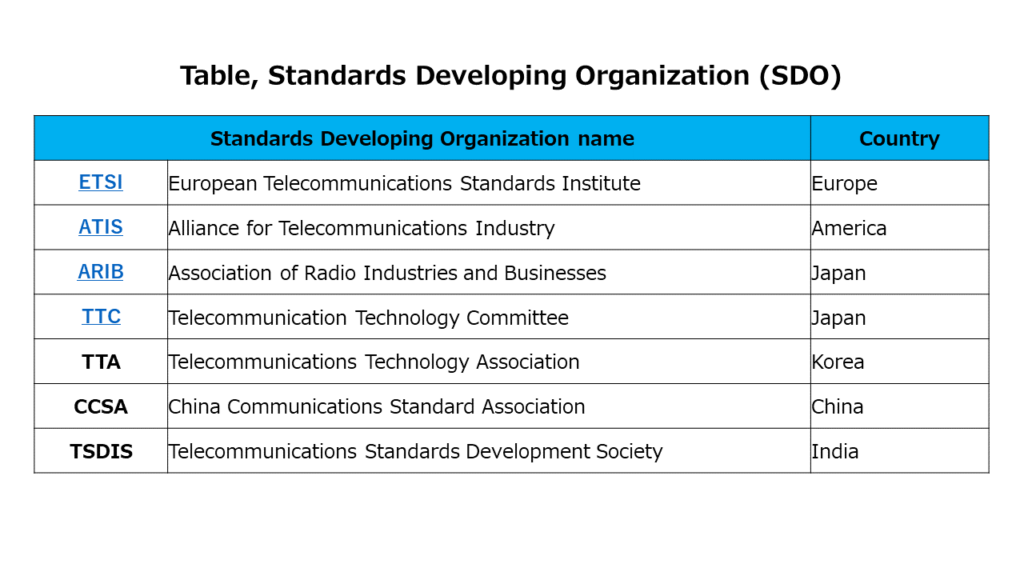
About 700 companies participate in 3GPP. 3GPP works in collaboration with other SDOs (Standards Developing Organizations) and industry groups to avoid gaps and duplication of communication standardization in liaison relations. (The figure below is referenced from NTT docomo public document [3GPP Trend].)
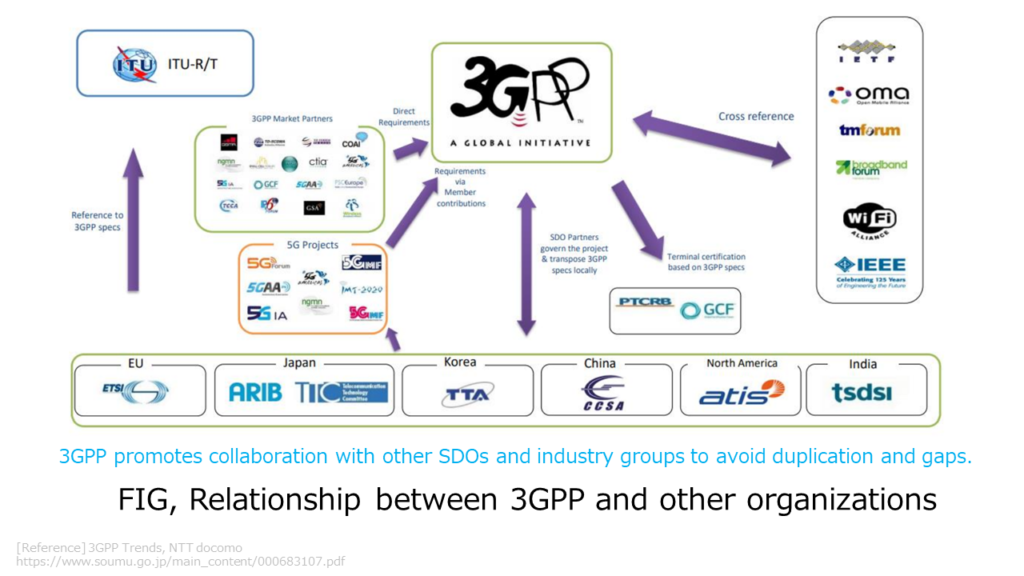
3GPP standardization, technology concept
3GPP have introduced technologies and architectures to provide flexible networks in response to service realization requests from various industries. Thanks to this concept, there are several concepts that underlie the advanced technical specifications of 5G Network.
The concept behind 5G standardization is shown below. It is based on the idea of “software and service-centric transformation”. 3GPP has decided on the basic concept of these 5Gs and is proceeding with concrete specifications.
It is also important to understand that the 5g technical specifications are based on these concepts, described below table.
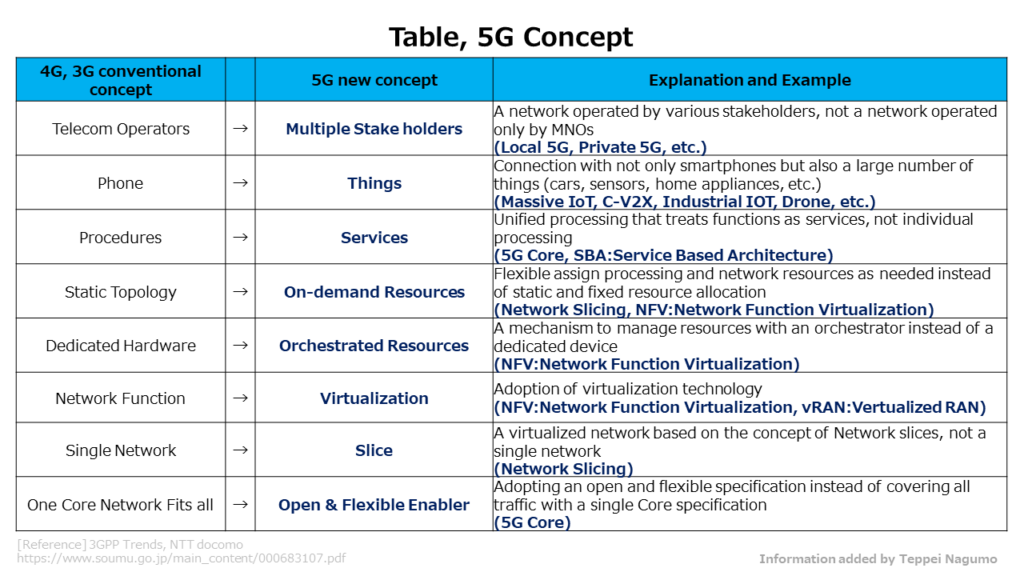
The information in the above figure is based on the following public material as following.
Trends in 3GPP, NTT docomo, [PDF file]
3GPP organizational structure and standardization procedure
3GPP organizational structure
3GPP is operated by an organizational structure called TSG (Technical Specification Group), which is under the control of PCG (Project Co-ordination Group).
Under TSG, there are multiple WGs (Working Groups) that carry out actual studies according to the content of each technology.
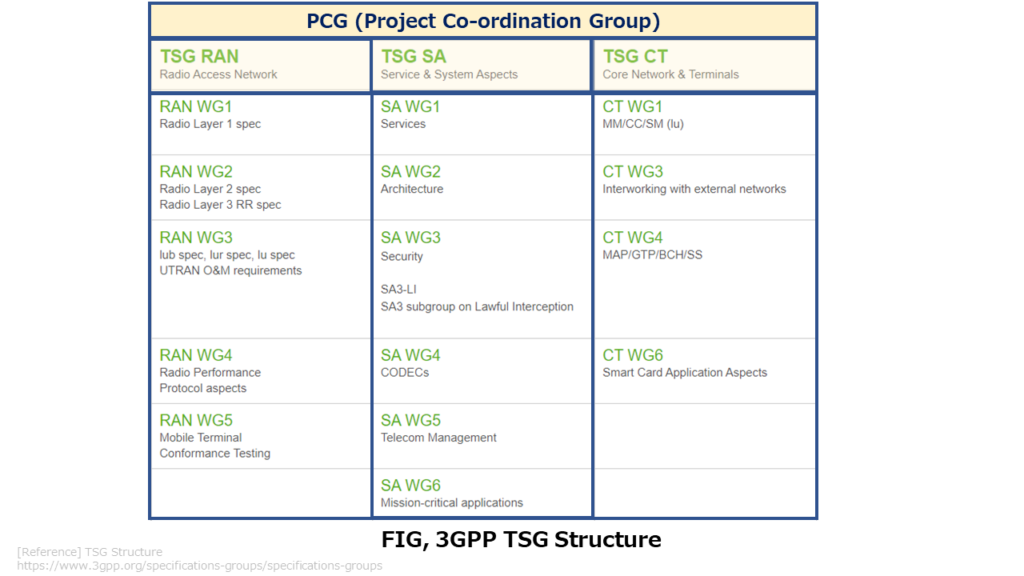
TSG is classified into the following three types of study groups.
- TSG RAN (Radio Access Network): Terminals and base stations
- TSG SA (Service & System Aspects): Services and the architecture that implements them
- TSG CT (Core Network & Terminals): Specifications between terminals and core networks
3GPP Organization and Activities, NTT docomo [WebSite]
3GPP standardization steps
The standardization process is the same for each study group. The standardization workflow proceeds in the following three stages shown in the figure below.
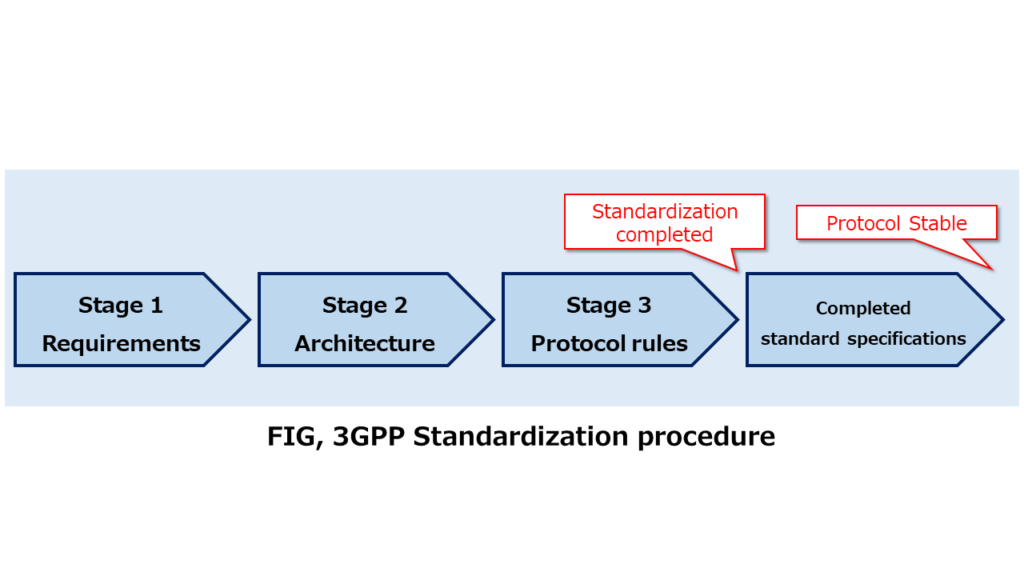
Standardization of 3GPP will proceed while paralleling the three stages. It takes about 15 to 18 months from the start to the end of the examination of each release. The figure below shows the schedule for each Release of 3GPP standardization.
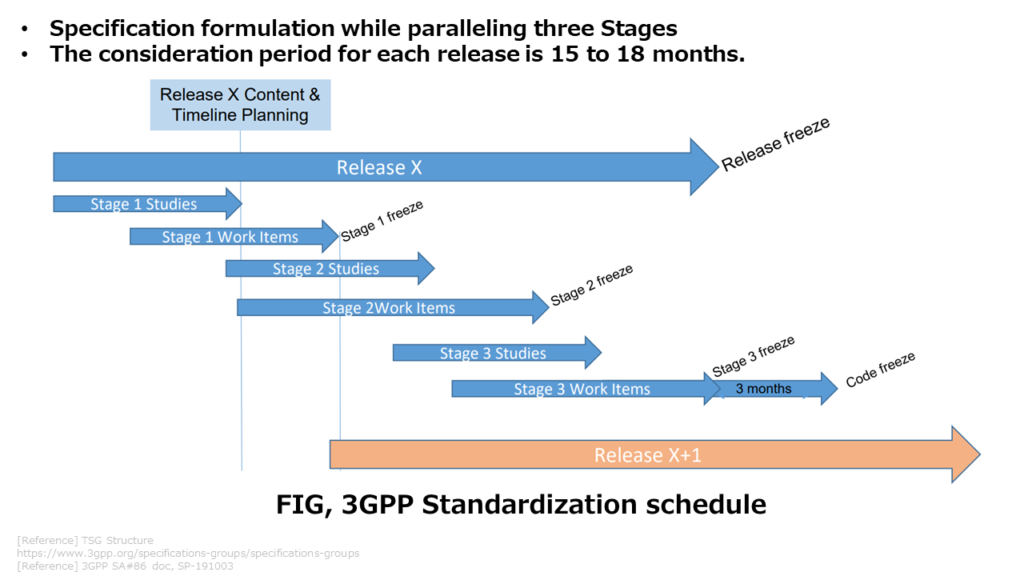
3GPP 5G standardization schedule
3GPP 5G enhanced technology (Rel-15 and Rel-16) service schedule
The figure below shows the 3GPP Release-15 and Release-16 standardization schedules and when the standardized features will begin to be used as commercial services. Specifications will be decided by 3GPP, and commercial services will start about one year or later after the end of standardization activities. (Figure below: From Qualcomm site [Expanding the 5G NR ecosystem])
Expanding the5G NR ecosystem, Qualcomm, [PDF file]
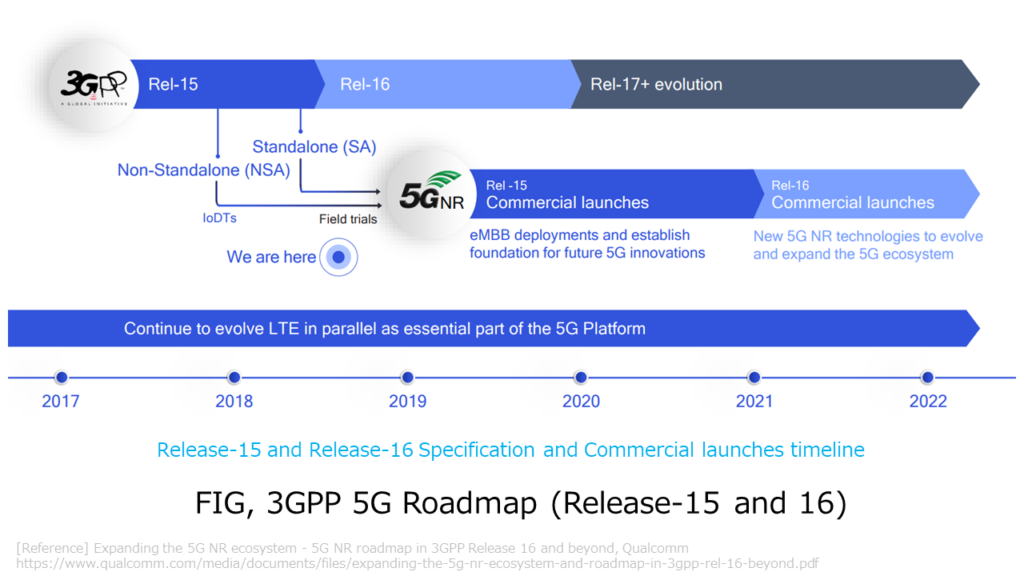
In the 3GPP specifications, Release-15 and Release-16 are 5G technical specifications. The following is a summary of the positioning of Release-15 and Release-16.
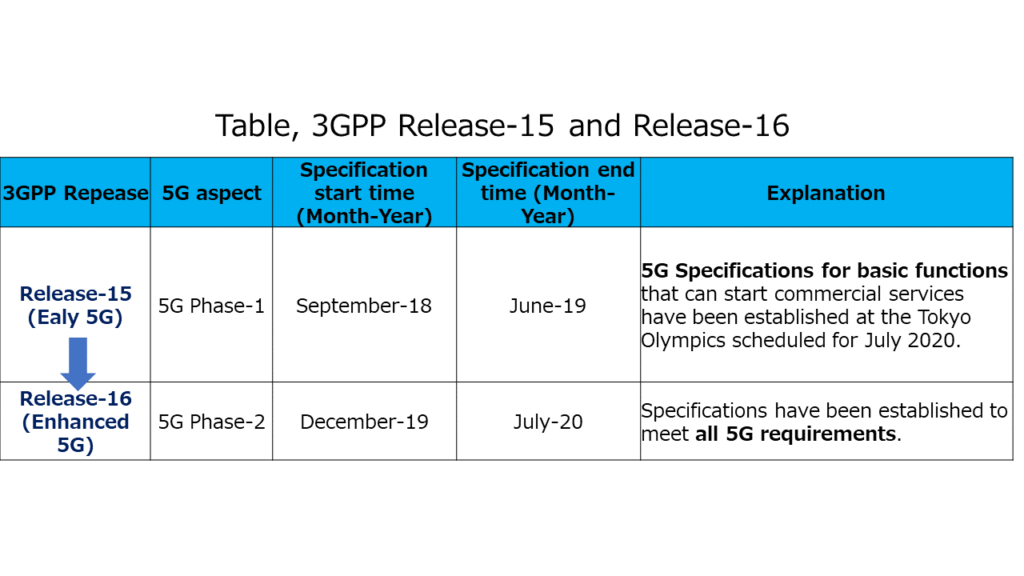
3GPP Release-16 and Release-17 Study Timeline
The figure below shows the schedule of 3GPP Release-16 and Release-17 standardization activities. (From 3GPP Official Web Site)
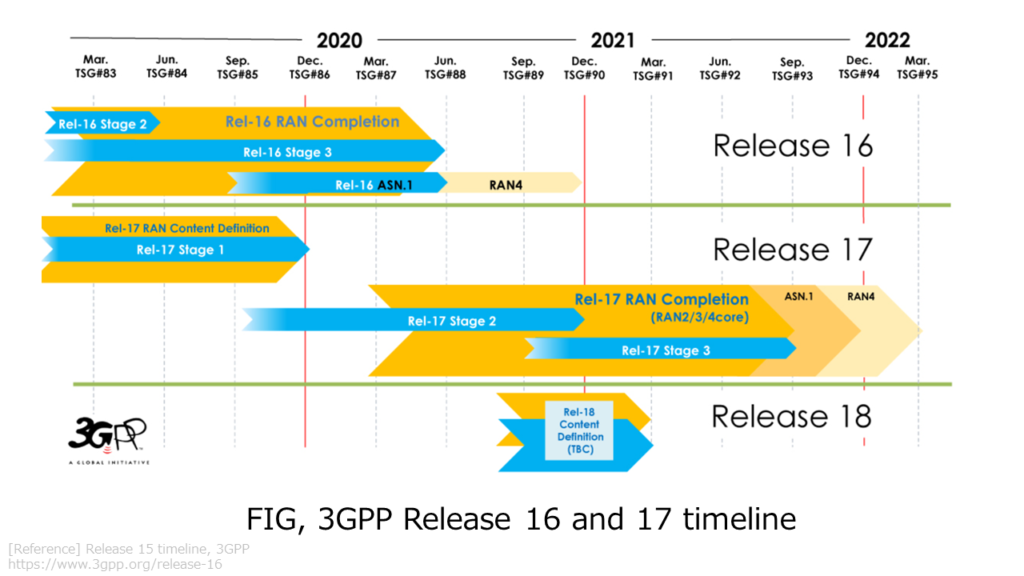
Functional overview of 3GPP Release-16
In the 3GPP specifications, Release-15 and Release-16 are 5G technical specifications. Release-15 is the first specification of 5G (5G Phase-1). Release-16 is a specification (5G Phase-2) that considers all 5G required specifications. The following is a summary of the positioning of Release-15 and Release-16 and the main technologies.
The figure below refers to the materials published by Qualcomm.
Propelling 5G forward A closer look at 3GPP Release 16, Qualcomm, [PDF file]
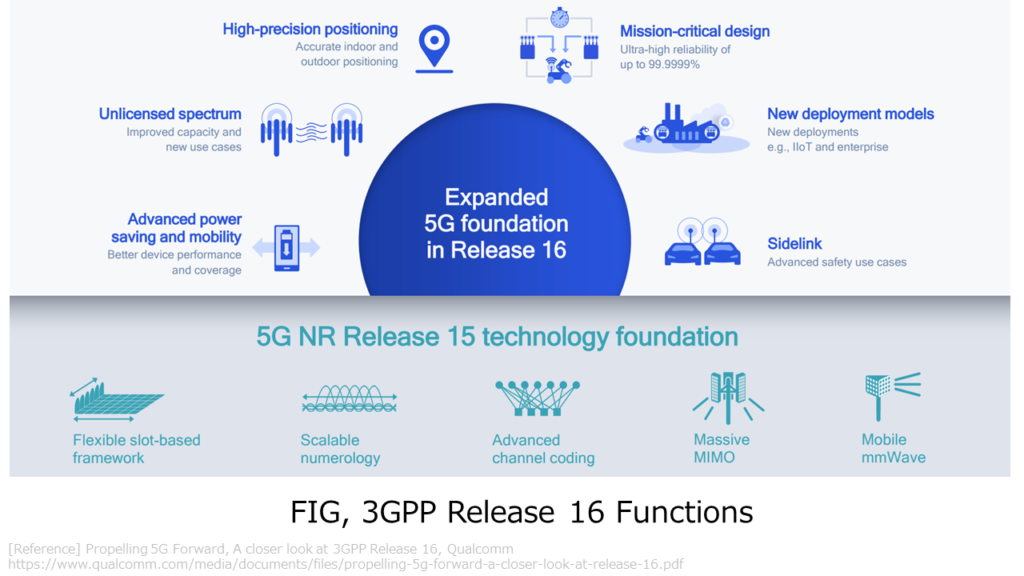
Propelling 5G forward: A closer look at 3GPP Release 16, Qualcomm, [Webpage]
3GPP Release-17
3GPP Release-17 was started in 2020. In Release-17, the study of the next technical concept and requirements of 5G communication technology has just started because of Mobile broadband and beyond.
Summary
I have summarized the outline of 3GPP, an international standardization body for mobile communications. By checking the release schedule of 3GPP, you can know what kind of function will be started as a commercial service from when.
In addition to 3GPP, mobile communications are being standardized by various standards bodies (SDOs) and industry groups. In 5G, technical specifications and efficiency improvement of Network deploy method are being actively studied in the Open Source Project.
For other major standards bodies such as O-RAN alliance and ONF, please refer to the following blog post.




コメント